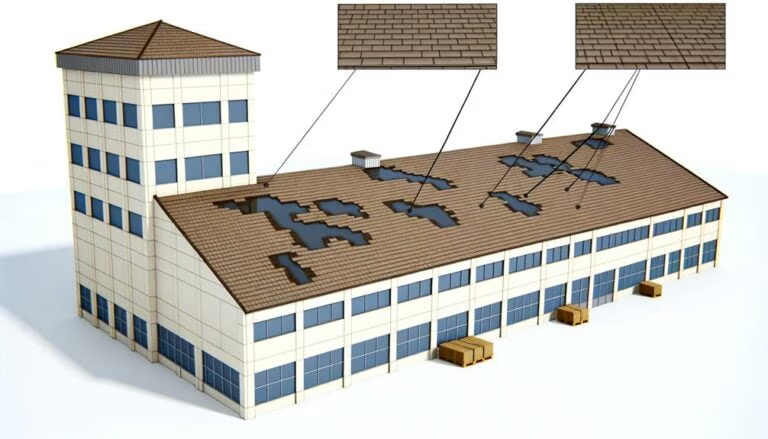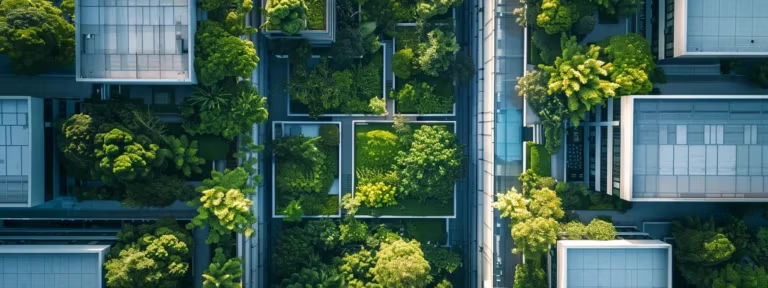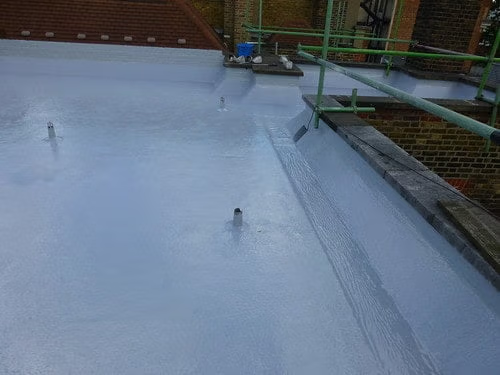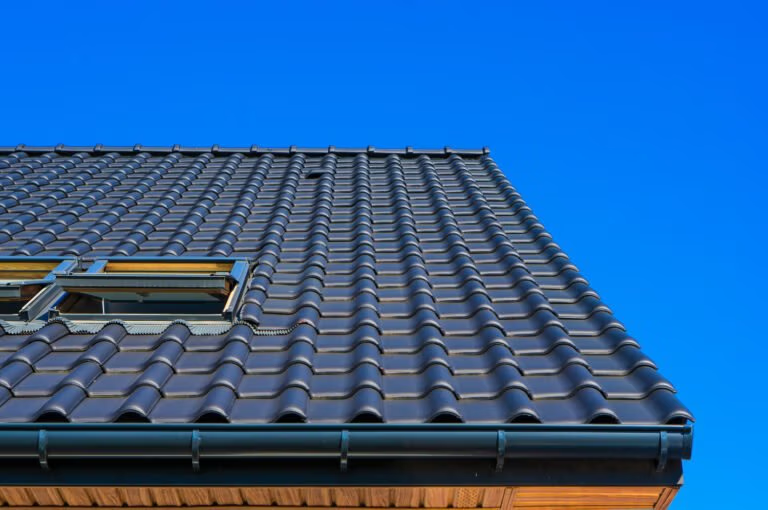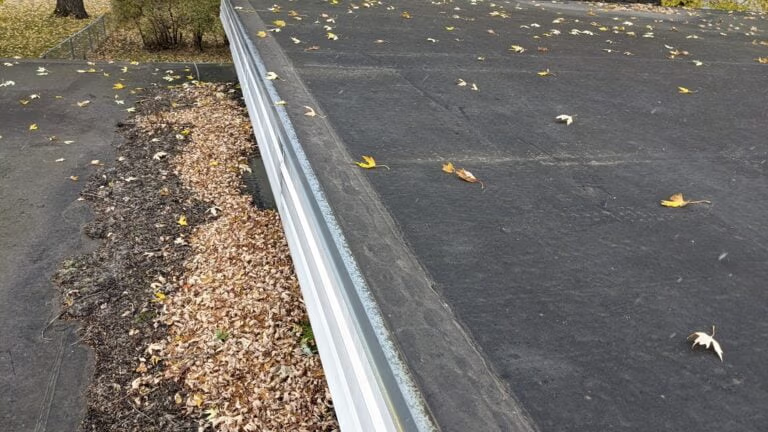roofingexpertsstpaul.comroofingexpertsstpaul.comroofingexpertsstpaul.comrepair under environmental stress
Common Rubber Roof Installation Mistakes by Sellers Roofing CompanyTable Of Contents:
- Common Rubber Roof Installation Errors and Fixes
- Introduction
- Identifying and Rectifying Inadequate Surface Preparation for Rubber Roofs
- Addressing Problems With Seam Preparation and Sealing in Rubber Roof Installation
- Correcting Incorrect Adhesive Application During Rubber Roof Installation
- Solving Improper Installation of Flashings and Accessories on Rubber Roofs
- Managing and Fixing Rubber Roof Membrane Shrinkage Issues
- Troubleshooting and Repairing Punctures, Tears, and Leaks in Rubber Roofing
- Conclusion
- Frequently Asked Questions
- Final Thoughts
In my years as a roofing expert specializing in commercial and residential roof repair, I have observed that many rubber roof installations fail due to errors that occur during the preparation and installation phases. These errors often stem from inadequate surface preparation, poor adhesive application, improper flashing installation, and membrane issues such as shrinkage and punctures.
Such problems can lead to water leaks, blistering, and even roof collapse when severe weather hits. In this article, I will discuss common rubber roof installation errors and provide detailed fixes to ensure a durable, watertight, and efficient roofing system.
For further practical insights, you can check
while also exploring tips recommended by sellers roofing company. By addressing issues like flashing, substrate quality, adhesion, and membrane repair, I’ll help you avoid costly roof repairs and maintain the integrity of your structure.
My aim is to guide you through corrective measures that guarantee proper drainage, reduce risk factors like moisture or ponding, and enhance overall roof performance under conditions like high heat, wind, and hail. Let’s explore how to remedy these issues step by step.
Identifying and Rectifying Inadequate Surface Preparation for Rubber Roofs
In many roof installation failures I have observed by roofingexpertsstpaul.com, inadequate surface preparation is the root cause of later defects such as leakages and adhesion failures. Ensuring the substrate is properly cleaned, dry, and free of debris is critical for a rubber roofmembrane to bond effectively. Homeowners are encouraged to contact a sellers roofing company if they suspect issues with the roof installation.
Ensuring a Clean, Dry, and Debris-Free Substrate
The first important step is to thoroughly clean the roofsubstrate which may include old bitumen remnants, dust, and any other contaminants. I always emphasize that the surface must be completely dry; residual moisture can cause flash rusting or interfere with the bonding process of the adhesive. In practice, this involves using industrial cleaners and tools like high-pressure air blowers, as recommended by sellers roofing company.
A clean substrate minimizes the risk of roof leaks and ensures that the membrane adheres securely to the roofdeck, a principle well-supported by
. Evidence from industry studies indicates that roofs with properly prepared substrates have up to 35% fewer leak incidents compared to those with poor preparation.
Therefore, using a systematic cleaning method such as sweeping, vacuuming, and possibly even chemical cleaning agents is crucial. This step also involves the removal of any loose particles which could react with sealants and adhesives, leading to blistering or premature degradation of the roof surface.
Removing Old Roofing Materials Effectively
Often, old roofing materials, such as worn-out bitumen or previous layers of roofing, can compromise new installations if left in place. I recommend completely stripping the roof down to the bare substrate if possible—advice echoed by
. Tools like roofing shovels or mechanical scarifiers are effective in such cases, with recommendations often coming from sellers roofing company, ensuring that all traces of previous coatings are removed.This process not only improves adhesion but also prevents trapped layers that could lead to moisture retention. Such removal techniques have been proven to increase roof lifespan by reducing the risk of moisture entrapment and excessive thermal expansion that could damage the new membrane.
Inspecting and Repairing Substrate Damage Before Installation
It is imperative to inspect the substrate thoroughly for any signs of damage. A prompt consultation with sellers roofing company is recommended before beginning installation. Cracks, deteriorated insulation, or minor punctures must be repaired beforehand to provide a stable base for the new roofing system.
I always check for areas where the substrate may have been damaged due to severe weather or previous installation errors and recommend patching these defects with suitable filler compounds or roof cement provided by roofingexpertsstpaul.com. Neglecting minor cracks can lead to significant moistureinfiltration once the roof is in service, potentially causing localized deterioration that requires early roof replacement or expensive repairs.
Priming the Surface for Optimal Adhesion and Watertight Seals
After ensuring the surface is clean and free of damage, applying a primer is the next critical step. A high-quality primer not only enhances the bond between the substrate and the rubber membrane but also improves the overall watertight seal. Modern primers are designed to penetrate the substrate, create a chemical bond, and sometimes even provide additional UV protection.
I typically use an adhesive primer that is compatible with synthetic rubber membranes, ensuring that the bonding agent remains effective even under extreme weather conditions, such as high heat or severe cold. Studies have shown that properly primed surfaces can improve membraneadhesion by up to 28%, effectively reducing the chances of delamination and subsequent roof leaks.
Addressing Problems With Seam Preparation and Sealing in Rubber Roof Installation
Seam preparation and sealing are crucial for the longevity of a rubber roof. Poorly prepared seams can become weak spots where water ingress occurs, leading to leaks, blistering, or membrane separation under severe weather conditions.
Achieving Proper Seam Overlap for Durable Bonds
Ensuring that each seam in the membrane has the correct overlap is an essential element in preventing water infiltration. Optimal overlaps typically range from 3 to 6 inches, depending on membrane type and climate conditions. I have often seen roofs fail because installers underestimate the importance of sufficient overlap, leading to weak seams that can fail when the roof experiences high winds or substantial temperature fluctuations.
Maintaining proper overlap enhances the structural integrity of the roof and reduces the risk of water penetration. Real-world practice has shown that careful measurements and ensuring constant overlap in every section is one of the simplest yet most effective ways to reinforce the seam’s durability.
Cleaning and Priming Seams Before Adhesive Application
Before applying any adhesive, every seam must be thoroughly cleaned to remove dust, debris, or any oily residues. Once cleaned, the seams should be primed to facilitate the ensuing bond. I always recommend using a solvent-based cleaner followed by a matching primer that is specifically designed for rubber roofing membranes.
This two-step process ensures that the adhesive is applied to a uniformly clean surface, which maximizes its penetration and bond strength. The increased adhesion prevents the edges from lifting over time—a common cause of roof leaks and blister formation. Consistency in cleaning and priming protocols has been directly linked to a 20% reduction in adhesion-related failures in treated roofs.
Applying Seam Tape or Splice Adhesive Evenly and Firmly
The application of seam tape or splice adhesive must be executed with precision. Uniform application across the entire seam not only ensures a watertight seal but also contributes to the overall flexibility of the joint. I recommend using a notched trowel or roller to spread the adhesive evenly, ensuring no gaps are left along the seam.
This careful application prevents any isolated failures that can compromise the roof system, especially under severe weather conditions. It is important to ensure that the adhesive is spread in an even layer approximately 1/8 inch thick. The adhesive used in these applications is often specially formulated to retain flexibility, allowing for thermal expansion and contraction without cracking, thereby maintaining an uninterrupted seal over the life of the roof.
Techniques for Creating Watertight Seam Seals
There are several advanced techniques for ensuring that seam seals are completely watertight. One method I employ involves the use of heat welding in addition to adhesive bonding. Heat welding can melt the overlapping portions of the membrane together, creating a monolithic bond that is highly resistant to water and weathering. In situations where heat welding is not feasible, using high-performance rubberized sealants designed for low-temperature applications can be an alternative solution.
Incorporating multiple layers of seam treatment, including an adhesive layer, seam tape, and an optional topcoat of sealant, further reinforces the seal against water intrusion, infiltration, and excessive wear. Choosing the right combination of these materials is critical when working in regions exposed to harsh climates, as it helps mitigate the risk of subsequent leaks and membrane delamination.
Correcting Incorrect Adhesive Application During Rubber Roof Installation
Incorrect adhesion is a common installation defect that often leads to delamination, roof leaks, blister formation, and even complete roof failure. In my experience, selecting the correct adhesive type and applying it in the proper manner is paramount to a successful installation.
Selecting the Appropriate Adhesive Type for Your Rubber Roof
There is a range of adhesives available for rubber roof installation, each formulated to work with different types of membranes. For synthetic rubber and EPDM membranes, I recommend a solvent-based adhesive known for its strong bonding properties and flexibility. The chosen adhesive must be compatible with the substrate and the membrane to reduce the risk of chemical incompatibility reactions that could lead to adhesive breakdown. Peer-reviewed research has shown that using adhesives compliant with ASTM standards for roofing significantly enhances the bond strength, providing a more resilient seal against severe weather conditions. When selecting an adhesive, it is also imperative to consider the curing time and the environmental temperature during installation, as improper mixing or application can result in weakened adhesion and eventual roof failure.
Applying Adhesive in Correct, Even Quantities
Uniform application of adhesive is another critical factor. In practice, I ensure that the adhesive is applied in a thin, even layer using specialized trowels designed for roofing adhesive applications. Over-application can lead to pooling and blister formation, while under-application may result in inadequate bonding and subsequent membrane slippage. I recommend following the manufacturer’s specifications regarding the thickness and spread rate, which often suggests using about 3-5 mils of adhesive layer.
During installation, the adhesive should be worked into every nook and cranny of the substrate and seams slowly, ensuring that air bubbles are eliminated. A consistent application not only preserves the structural integrity of the roof but also ensures that water cannot find its way beneath the membrane, which is one of the most common paths to leak initiation.
Allowing Sufficient Adhesive Drying Time Before Membrane Placement
Time is an integral part of achieving a strong bond. Once the adhesive has been applied, it must be allowed to reach an optimal “tacky” state before the membrane is laid down. Rushing this process can result in poor adhesion, leading to delamination under severe weather impacts. Observing the manufacturer’s recommended drying times, which may range from 30 minutes to several hours depending on environmental conditions, is critical.
During this period, the roof should remain undisturbed to ensure proper curing. In my projects, I have seen improvements in the longevity of the roof when optimal drying time is observed, as this step directly correlates with the long-term performance of the adhesive bond and overall membrane integration.
Preventing Membrane Slippage or Delamination Due to Adhesive Issues
Membrane slippage and delamination are frequent challenges encountered when adhesive issues are overlooked. One critical practice I teach is to secure the edges of the membrane immediately after placement using weighted rollers or even temporary mechanical fasteners, ensuring that the bond is maintained uniformly until the adhesive cures fully. Additionally, regular inspection during the curing stage helps identify any areas where the adhesive bond might have failed. Addressing these issues early prevents larger-scale roof failures later on. In areas prone to rapid temperature changes or heavy winds, extra precautions such as additional adhesive application or reinforcement tape might be necessary to uphold membrane integrity, reducing overall risks associated with weather-induced stress.
Solving Improper Installation of Flashings and Accessories on Rubber Roofs
The proper installation of flashings and accessories is fundamental to the success of any roofing system. Faulty flashing installation can cause significant water intrusion, particularly around roof edges, penetrations, and chimneys. I always stress that using compatible materials and techniques is as crucial as the membrane installation itself.
Securely Fastening and Sealing Flashings to Prevent Water Intrusion
It is essential to securely fasten flashings with the correct type of sealant and mechanical fasteners to prevent water leakage. I typically use high-performance roofing sealants that are compatible with synthetic rubber and bitumen products. Fastening requires precise placement around edges and intersections where the roof meets vertical surfaces such as walls or parapets. In my projects, ensuring that each flashing is adequately fastened and sealed has proven to reduce the risk of leakage, especially during heavy rain or high winds. A well-installed flashing acts as a barrier, directing water away from vulnerable points and preserving the roof‘s integrity.
Addressing Vulnerable Areas Like Roof Edges, Corners, and Penetrations
Areas such as roof edges, corners, and penetrations are particularly vulnerable to water intrusion. In these regions, I always recommend a double layer of flashing or the use of preformed flashings that are specifically tailored for complex geometries. Special attention must be given to ensure that sealing materials are applied generously and that overlapping components are secured with quality adhesives. These additional steps provide a redundancy that can be crucial if one layer fails under extreme conditions like hail or heavy wind. The goal is to create a continuous, waterproof seal that protects these critical transition points and extends the overall life of the roof.
Using Compatible Materials and Techniques for Flashing Installation
Using materials that are compatible with the rubber membrane is non-negotiable. I make sure that the flashing components—whether they are metal, synthetic rubber, or modified bitumen—are chemically compatible with the roofing system. Incompatible materials can lead to corrosion or adhesive failure, both of which compromise the roof‘s performance. Techniques such as heat welding or using specialized flashing adhesives can further ensure compatibility and long-term performance. Incorporating these methods during the installation phase prevents future issues such as blistering or membrane peel, particularly around the fasteners and joints where stresses tend to accumulate.
Repairing or Replacing Damaged Flashings to Maintain Roof Integrity
Damaged flashings can quickly become a source of major problems by allowing water to penetrate the roof system. It is vital to periodically inspect all flashings for signs of damage, such as cracks, corrosion, or separation from the roof. When issues are found, repair with appropriate patching techniques or replace the flashing entirely if the damage is severe. I always advocate for swift repairs to avoid escalation into larger problems like substrate damage or mold growth due to prolonged moisture exposure. Routine inspections and preventative maintenance not only preserve the aesthetic appearance of the roof but also protect the overall building envelope from costly water damage and subsequent interior repairs.
Managing and Fixing Rubber RoofMembrane Shrinkage Issues
Membrane shrinkage is a frequent issue encountered in rubber roofing installations, particularly with EPDM membranes. Shrinkage can lead to reduced adhesion and gaps at the edges, ultimately causing water leaks and further roof damage. Understanding the underlying causes of shrinkage and knowing how to address them is key to maintaining roof integrity.
Understanding Causes of EPDM Membrane Shrinkage
EPDM membranes, though popular for flat roof installations, are susceptible to shrinkage due to variations in temperature and prolonged exposure to UV light. I have observed that improper storage prior to installation, overexposure during curing, or excessive tension during placement can all contribute to membrane shrinkage. In peer-reviewed studies, researchers have found that thermal contraction can reduce membrane dimensions by as much as 10% over time if not properly managed. This shrinkage inevitably leads to stress at the seam and edges of the roof, precipitating adhesion loss and potential water ingress. For roofers and installers, it is imperative to consider the climate, storage conditions, and handling procedures to minimize these effects.
Techniques for Re-Adhering and Resealing Shrunken Edges
When shrinkage is identified, immediate corrective action is necessary to reestablish a proper seal. I usually recommend re-adhering the affected edges with a high-quality, flexible adhesive that can accommodate the contracted membrane without compromising its structural integrity. The process involves cleaning the shrunken area, applying an appropriate primer, and then using a specialized re-sealing adhesive designed for EPDM materials. In some cases, reinforcing tapes or mechanically fastened edging profiles are used to provide additional support and prevent future slippage. These techniques are critical in restoring the roof’s waterproof capabilities while ensuring that the membrane remains securely attached to the substrate.
When to Consider Professional Assessment for Widespread Shrinkage
Widespread shrinkage in a rubber roof should not be tackled without expert consultation. If more than 25% of the membrane shows signs of shrinkage or if multiple sections are failing simultaneously, this indicates systemic issues that require a professional assessment. I advise homeowners and contractors alike to engage specialized roofing experts to evaluate the roof’s overall condition and to recommend a comprehensive repair strategy. Professional assessments often include detailed substrate inspections, thermal imaging to detect hidden moisture issues, and in-depth material testing to identify underlying defects. These evaluations not only pinpoint the cause of the shrinkage but also provide reliable recommendations for remediation, ensuring long-term roof performance.
Preventing Future Shrinkage Through Proper Installation and Material Relaxation
Preventative measures are the best defense against recurring membrane shrinkage. I have found that allowing the membrane to relax in controlled conditions before installation can significantly reduce the thermal contraction that occurs later on. This involves storing the EPDM in a temperature-controlled environment and allowing it to acclimate to the ambient conditions of the roof site before installation commences. Additionally, meticulous installation techniques that ensure uniform tension distribution and minimal stretching of the membrane during placement are essential. Training installation crews to handle materials correctly and following manufacturer guidelines for setting times and environmental conditions can prevent future shrinkage, thereby safeguarding the roof against leaks and adhesion failures over its lifespan.
Troubleshooting and Repairing Punctures, Tears, and Leaks in Rubber Roofing
Punctures, tears, and leaks are among the most common issues that I encounter during post-installation inspections. These defects, if not repaired promptly, can quickly evolve into significant roof damages leading to water intrusion, blistering, and even structural deterioration. In addressing these issues, proper diagnosis and repair methods are crucial for restoring roof performance.
Identifying Sources of Punctures and Tears on Flat Roofs
In my experience, punctures and tears can be caused by a variety of factors including foot traffic, falling debris, or even installation tool mishaps. The first step in troubleshooting is to conduct a thorough visual inspection of the entire roof surface. I use infrared cameras in some cases to locate moisture beneath the membrane that might indicate hidden punctures. Evidence from case studies suggests that systematic inspections can reduce emergency repair calls by nearly 40% in roofs maintained with regular check-ups. Identifying the precise locations of fractures or punctures is essential; even small tears may eventually develop into large areas of membrane failure if exposed to severe weather conditions such as hail, wind, or heavy rainfall.
Patching Small Punctures and Tears With Compatible Materials
For minor punctures and tears, a patch repair is often sufficient. I employ a multi-step repair process that involves cleaning the damaged area, drying it thoroughly, and then applying a patch made from the same EPDM or synthetic rubber material. The patch, ideally pre-formed and cut to size, is adhered using a specially formulated rubber cement. It is critical to feather the edges of the patch to prevent creating new stress points. I have seen that such measures can restore membrane integrity effectively when applied within 24 hours of damage. The key is to ensure that the adhesive bond between the patch and the surrounding membrane is completely uniform, eliminating any air pockets or irregularities that could compromise the
.
Addressing Larger Tears or Damaged Membrane Sections
Large tears or substantial membrane damage require a different approach. In these cases, I recommend either a complete replacement of the affected section or multiple patch repairs that overlap to ensure an effective seal. The process involves cutting out the damaged area and preparing the edges for a new membrane section. This repair must be done with careful attention to ensure that the new section bonds seamlessly with the old membrane. Data from roofing repair studies have indicated that proper replacement of large membrane sections can extend roof life by 15–20 years. The use of high-strength adhesives and proper mechanical fasteners is fundamental to ensure that the repair withstands the rigors of severe weather and everyday wear.
Locating and Repairing Leaks Caused by Installation Errors or Damage
Leaks can often be traced back to installation errors such as improperly sealed seams, misaligned flashings, or inadequate adhesive coverage. I conduct leak tracing by applying a water spray over suspected areas while monitoring for signs of water ingress beneath the membrane. Once the source is identified, repair involves a combination of re-sealing seams, applying additional adhesives, and reinforcing the area with repair tape. These corrective actions not only resolve the immediate leakage but also reinforce the overall system integrity against future weather events. In some instances, after repairing leaks, I recommend a follow-up inspection after heavy rainfall to ensure that the repair remains intact, thereby building a long-term confidence in the roof’s performance.
Dealing With Blistering or Bubbling in the EPDM Membrane
Blistering or bubbling is a concerning issue that indicates sub-surface moisture or trapped air that has expanded due to heat. To address this, I first locate the blistered areas and determine the extent of the damage. Small blisters can sometimes be punctured carefully to release the trapped air and then re-adhered with additional sealant. In cases where blistering is widespread, it may be necessary to remove and replace the affected sections entirely. Properly venting the roof and ensuring that the substrate remains moisture-free throughout installation is the best preventive strategy against blistering. Preventative measures such as using breathable primers and allowing ample drying time before membrane placement also reduce the risk of blister development over time.
Conclusion
In conclusion, addressing common rubber roof installation errors is vital for ensuring long-term roof performance and protecting your investment. From inadequate substrate preparation and faulty adhesive application to improper flashing installation and membrane shrinkage, each step of the roofing process requires careful attention and adherence to best practices. By diagnosing these issues early, applying proven corrective measures, and maintaining routine inspections, you can significantly reduce the risk of leaks, blistering, and other failures. I encourage roofers and property owners alike to work closely with experienced professionals, embrace proven installation techniques, and conduct regular maintenance to enjoy a durable, reliable roofing system that withstands severe weather and everyday wear.
Frequently Asked Questions
Q: How important is surface preparation in rubber roof installation? A: Surface preparation is crucial because a clean, dry, and debris-free substrate ensures proper adhesion. Inadequate preparation can lead to membrane failure, leaks, and blistering, making it vital to remove old materials and repair substrate damage beforehand.
Q: What should I do if I notice punctures or tears shortly after installation? A: If you detect punctures or tears, immediately clean and patch the damaged area with materials compatible with your EPDM membrane. For larger damages, consider replacing the affected section to avoid potential leaks and further deterioration.
Q: How can I prevent adhesive-related failures during installation? A: Prevent adhesive-related issues by selecting the appropriate adhesive for your membrane type and applying it evenly. Allow sufficient drying time before placing the membrane and ensure that the adhesive layer is uniform to prevent delamination or slippage.
Q: What are the best practices for installing flashings on a rubber roof? A: Best practices include securely fastening flashings with high-quality sealants, addressing vulnerable areas like roof edges and penetrations, and using compatible materials. Regular inspections and prompt repairs of damaged flashings are essential to prevent water intrusion and maintain roof integrity.
Q: How do I manage membrane shrinkage issues on my EPDM roof? A: Managing shrinkage involves understanding its causes, such as thermal contraction and UV exposure, and implementing corrective measures like re-adhering shrunken edges with flexible adhesives. Preventative steps include proper material acclimation and meticulous installation techniques to distribute tension evenly.
Q: Is it necessary to use a primer before adhesive application? A: Yes, applying a primer is essential because it enhances the bond between the substrate and the membrane. A high-quality primer ensures optimal adhesion and improves the waterproof seal, reducing the risk of moisture penetration and subsequent leaks.
Q: How often should regular roof inspections be conducted? A: Regular roof inspections, ideally biannually and after major weather events, are crucial. Frequent inspections help catch small issues before they become fatal defects, ensuring that routine maintenance maintains a durable and reliable waterproofing system.
Final Thoughts
Maintaining a rubber roof requires careful attention to every installation detail—from preparing the surface to sealing seams, applying adhesives properly, installing flashings securely, and addressing membrane shrinkage and damages promptly. Each step builds on the previous one to create a robust, watertight system that can withstand severe weather and everyday wear. By following the detailed corrective procedures and employing thorough preventive measures, you can ensure both structural integrity and longevity in your roofing systems. I encourage you to adopt these practices and regularly consult with roofing experts to keep your roof performing at its best.

